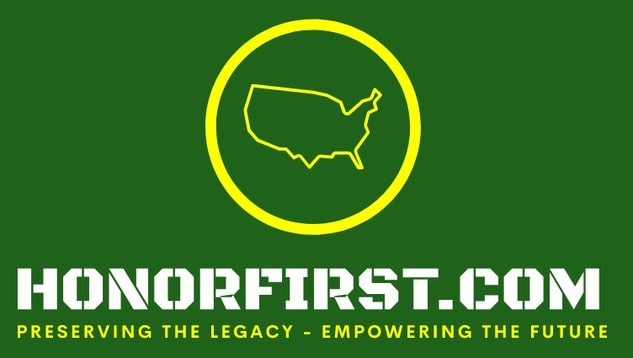April 30 - May 6IntroGood morning, Welcome to another This Week in USBP History! I hope you don't mind getting this a day early. I'll be on a plane tomorrow morning and would rather be early than late. I am always looking to improve the blog to provide a better experience for the reader and to encourage greater participation. Recently, I've initiated two improvements:
*** News Flash *** On Friday, three BORTAC agents were honored with the Newton-Azrak Award for their exceptional bravery and dedication to duty in the face of grave danger. These courageous agents, along with two accompanying sheriff's deputies, entered classroom 111 at Robb Elementary in Uvalde, Texas. Upon entering, they were met with gunfire and quickly responded, bringing a tragic school shooting to an end. Unfortunately, the incident claimed the lives of 19 innocent individuals. The awards ceremony in which those agents were presented Newton-Azrak Awards occurred at the Del Rio Sector, led by Chief Patrol Agent Jason Owens. Many other awards were presented at that ceremony, including a Purple Cross. I believe the Purple Cross was presented to Border Patrol Agent (BORTAC Operator) Wayne Jackson, who received multiple wounds during the room entry at Robb Elementary School, as reported by the San Antonio Express-News. There were also approximately 30 USBP Commendation Medals awarded for both exceptional meritorious achievements and extraordinary heroism. There were also well over 100 USBP Achievement Medals awarded, including approximately 10 to a group of agents for their service at Robb Elementary School. It is common knowledge that the law enforcement response to Robb Elementary School was as bad as can be imagined. The numerous investigations into the response will assign responsibility, and officers will be held accountable. However, the many faults that occurred do not erase the instances of heroism and accomplishments that did occur. It is important for the Patrol and its leaders to provide affirmation to the agents that did well, even in the face of a tragedy where so much went wrong. I commend the U.S. Border Patrol leadership who risk public scrutiny “…to take care of those in their charge,” as Simon Sinek recommends. After the Del Rio Sector’s awards ceremony, I received a flood of emails, messages, and phone calls from thankful agents telling me of the recognitions they had received. At a time when the Patrol and its workforce are struggling, this focus on the workforce was needed and deserved.This compelled me to put pen to paper, and I wrote the following USBP leaders an email:
My motivation was to express gratitude for the awards ceremony, encourage leadership, and foster appreciation within the agency. I also aimed to support them by providing positive feedback while showing that I can acknowledge positive actions despite past criticisms. The Email Dear Chiefs, As leaders, we often find ourselves on the receiving end of criticism, and I must admit I have been among those critics at times. However, today I am writing to express my gratitude and admiration for your exceptional leadership in recognizing the achievements of the Del Rio Sector Border Patrol agents. I have received numerous phone calls, messages, and emails from agents of all ranks expressing their joy and appreciation for the acknowledgment they received during today's awards ceremony. The event saw three agents awarded the Newton-Azrak Award, one agent the USBP Purple Cross (with "V" device?), 30 USBP Commendation Medals, and over 100 USBP Achievement Medals. Recognizing the service, accomplishments, and heroism of our workforce is of utmost importance. It is essential for leaders to demonstrate their appreciation for employees who embody the organization's values through such awards. Acknowledging outstanding performance not only provides affirmation to employees that their efforts exceeded expectations, but it also offers reassurance even when the outcomes may not have been ideal. The agents who responded to Uvalde take solace in the fact that their leadership and the Patrol have officially recognized their actions as commendable. On behalf of the hundreds of agents who may not have the opportunity to express their gratitude directly, I extend my heartfelt thanks to you and your teams for a job well done. Your efforts to value and appreciate our workforce have made a significant impact. Wishing you all a fantastic weekend! Respectfully, Clifford Gill This week, we'll dive into the U.S. Border Patrol's history, starting with Frank Berkshire's 1918 proposal and the Commissioner-General's letter on German activity. We'll explore the establishment of the Senior Patrol Inspector position, the story of Paul L.D. Calloway, the first African American Border Patrol Inspector, and the 1956 border fence cost analysis. Join us as we uncover these fascinating stories and much more! There are no Newton-Azrak Award anniversaries for the week. However, there are several actions for which the date is unknown. I will highlight some of those below. In 1982, three of the 26 non-USBP Newton-Azrak Award recipients received their recognitions. We remember Nathaniel A. Afolayan on the anniversary of his death. Enjoy and have a great week! Cliff PS -
ESPRIT DE CORPSThe workplace climate resulting from a combination of organizational pride and employee morale.
Esprit de corps is reinforced through the shared goals, mission and values of the organization and its employees. The definition turns Esprit de Corps into a simple formula and defines parts that comprise organizational pride and employee morale. Esprit de Corps = Organizational Pride + Employee Morale Esprit de Corps is the key to a healthy organization and engaged employees. Honor First is foundational to the Border Patrol's organizational pride and integral to its Esprit de Corps. THROWBACK PHOTO OF THE WEEKThis close-up photo, believed to be taken in 1936, features two seasoned El Centro Sub-district Border Patrol Inspectors. In 1936, the Patrol transitioned from wearing puttees or boots and riding breeches to pants. The inspector on the left dons two stars and a bar, signifying at least 12 years of service, suggesting he was likely one of the first Border Patrol Inspectors in 1924. Partially visible between them is another inspector with three-inch stripes on his sleeves. Based on his position in the group, these stripes are probably silver, indicating the rank of Senior Patrol Inspector. Learn more about the Patrol's early rank insignia here. DOCUMENTS AND EVENTS1918
1924
1926
1929
1931
1939
1955
1956
2003
NEWTON-AZRAK AWARD |
Enlisted Personnel (E-1 to E-9) ~ 82% of the total force |
Warrant Officers (W-1 to W-5) ~ 2% of the total force |
Commissioned Officers (O-1 to O-10) ~ 16% of the total force |
|
|
|
The Pay-based Approach
Next, I attempted to create a Border Patrol rank structure based purely on pay. However, this approach was also flawed. For example, a GS-13 Supervisory Border Patrol Agent might receive a step increase that pushes them into the next rank insignia, despite the scope and complexity of their position remaining unchanged. Furthermore, those at the GS-14 and GS-15 pay cap would all share the same insignia. This approach wasn't viable either.
The Personal Perception Approach
Then, I had a eureka moment! I created an Excel spreadsheet, listing each USBP position title in a column and assigning three additional columns for Scope, Complexity, and Influence, with a maximum of 10 points each. Naturally, the Chief of the Border Patrol would score 30 points, and all other positions would receive less. After spending a considerable amount of time assigning values, I sorted the positions based on total points and started designating rank insignia. Upon completion, I was initially thrilled with my results - a rank insignia structure for the Patrol that seemed logical, defendable, and undoubtedly the best. But then reality struck...
I realized my method was purely based on my personal perception of the prestige associated with each position. Embarrassed by my amateurish approach, I was grateful I hadn't shared it with too many people.
A New, Improved Structure
Yet, I still believed there had to be a better rank structure for the Patrol. Currently, the Patrol's system is title-centric. A Chief Patrol Agent (CPA) wears two stars regardless of whether they are a Senior Executive Service (SES) member or a GS-15. A Patrol Agent in Charge dons eagles whether overseeing a 600+ agent station as a GS-15 or a 10-agent station as a GS-13. Furthermore, a GS-15 CPA sports two stars, while an HQ SES Deputy Directorate Chief has only one. Ridiculous, right? This system is confusing not only for the workforce but especially for external groups.
Eventually, I developed a logic that focuses on the scope and complexity of each position, as reflected in their assigned pay grade, while accommodating certain exceptions specific to the Patrol.
The Proposed Structure
I believe this new structure addresses the issue of overlapping pay grades and rank insignia. Check out the table below and let me know your thoughts.
Insignia |
Pay Grade |
Exception |
4 Stars |
Senior Executive Service (SES) |
Chief of the Border Patrol |
3 Stars |
SES |
Supervising a 3-star SES, wear 4 stars. |
2 Stars |
SES |
Supervising a 2-star SES, wear 3 stars. |
1 Star |
SES |
Supervising a 1-star SES, wear 2 stars. |
Eagles |
GS-15 |
Supervising a GS-15, wear 1 star. |
Silver Oak Leaves |
GS-14 |
Supervising a GS-14, wear eagles. |
Gold Oak Leaves |
GS-13 |
Supervising a GS-13, wear silver oak leaves. |
Double Silver Bars |
GS-13 |
Only Supervisory Border Patrol Agents wear this insignia |
Single Silver Bars |
GS-13 Non-supervisory |
Only Border Patrol Agents - Programs wear this insignia |
Now to the history! In 1904, Jeff Milton was appointed a Chinese Inspector. The Father of the Border Patrol opined on the merging of customs and immigration functions in 1922. The birth of the USBP Pistol Team happens in 1935 and much more!
There are no known Newton-Azrak Award anniversaries for the week. However, please see the 1981 recipients for the Newton-Azrak Award. No dates are given for any of their actions. Five of the 26 non-USBP Newton-Azrak Award recipients were from 1981.
We remember Border Patrol Agent Christopher Shane Simpkins on the anniversary of his death.
Enjoy and have a great week!
Cliff
PS -
- As an open and continuous invitation to current and former USBP employees, I am always accepting photos to post in the USBP Photo Galleries and in the Upholding Honor First pages. I sure would appreciate you visiting those pages and sending me anything that you think I could post (just send them to [email protected]).
- As always, make sure to explore all of the hyperlinks to the documents and pages.
- Finally, please forward this blog to whomever you think may enjoy it.
ESPRIT DE CORPS
- Organizational pride is the positive feeling experienced by employees from being part of a meaningful team that is rich in history, tradition and culture.
- Employee morale is the feeling experienced by employee based in part on their perception of:
- Being valued by the organization,
- Fairly compensated, and
- Performing meaningful work.
Esprit de corps is reinforced through the shared goals, mission and values of the organization and its employees.
The definition turns Esprit de Corps into a simple formula and defines parts that comprise organizational pride and employee morale.
Esprit de Corps = Organizational Pride + Employee Morale
Esprit de Corps is the key to a healthy organization and engaged employees.
Honor First is foundational to the Border Patrol's organizational pride and integral to its Esprit de Corps.
DOCUMENTS AND EVENTS
- On April 13, 1904, Milton was appointed as a Chinese Inspector with the Immigration Service at the age of 43 and posted at the Tucson District, covering the territory from Yuma, Arizona, to the New Mexico line.
- From - HONOR FIRST: The Story of the United States Border Patrol - Volume I by Joseph Banco
1918
- On April 11, 1918, the Commissioner-General wrote a letter to the Chief of Military Intelligence in Washington D.C. The referenced document was written on February 5, 1918, by future Chief and Father of the Border Patrol Frank Berkshire (1870-1934), and provides a 10-page summary of the status of the border.
1922
- On April 13, 1922, Frank Berkshire wrote a memo to the Commissioner-General concerning the suggestion of merging aspects of the Customs Service with the Immigration Service. Berkshire divided his answer into two parts, administrative and patrolling functions. Berkshire did not support merging customs and immigration inspection functions (which would occur in 2003 when the U.S. Customs Service was renamed and absorbed the Patrol and Immigration Inspectors). However, he did support merging all federal border patrol functions under one organization.
1926
- On April 12, 1926, Thomas A. Robinson received a letter of inquiry to ascertain if he would accept a probational appointment as a Patrol Inspector in the Jacksonville District. Although Mr. Robinson indicated he would accept the position, there are no records that support him ever having become a Border Patrol Inspector.
1931
- The document in this file describes a brief gunfight that occurred on April 10, 1931 involving Patrol Inspector Charles Askins, two other Patrol Inspectors and shooters believed to have been Mexican Fiscal Officers. The shooting occurred immediately after the Patrol Inspectors intercepted alcohol smugglers at the river bank in El Paso, TX. Patrol Inspectors involved in the shooting:
- Patrol Inspector Charles Askins, Jr. (1907-1999)
- Patrol Inspector Brett Burgett Hurff (1897-1952)
- Patrol Inspector Chloe John McNatt (1898-1977)
1935
- On April 11, 1935, former Chief of the Border Patrol Ruel Davenport (1878-1961) wrote a response to the current Chief of the Border Patrol Willard Kelly (1903-1969) concerning training newly appointed Patrol Inspectors.
- This response is believed to have been related to a December 22, 1934 memo that Chief Kelly had sent to all of the border districts (except for the El Paso District). The memo shared the El Paso District training plan, requested all other districts to explain how they trained new inspectors and invited them to give suggestions and comments.
- On April 11, 1935, District Director Harry R. Landis (1880-1950) of the Montreal District (District #1), sent a telegram to INS headquarters in relations to a visit by Chief of the Border Patrol Willard Kelly. The telegram pertained to the state of the facilities in the district which includes modern day Houlton, Swanton and Buffalo Sectors.
- On April 11, 1935, in what would prove to lead to the birth of the USBP Pistol Team, the Tampa Sub-district issued a nationwide shooting challenge to all USBP sub-districts, “We will shoot any course of fire at any distance.” See “How did the USBP Pistol Team begin?” in the HonorFirst History page for the full story and to find out how Tamp placed after issuing the challenge.
1937
- On April 13, 1937, Newport District Director Landis sent the Commissioner of the INS a report of all the Colt and Smith & Wesson Model 1917 revolvers in their inventory. This was in response to the USBP transitioning to the Colt New Service Model .38 caliber revolver. Interestingly, it is mentioned that Patrol Inspector Charles Askins visited the district in the memo.
1942
- On April 10, 1942, Assistant Chief Supervisor of the Border Patrol Walter Frederick Miller (1893-1967) wrote a letter, forwarding a request for 20 guard badges to be furnished to the Oak Grove Inn in Asheville, NC. This letter is noteworthy for several reasons:
- It shows that the INS was headquartered in Philadelphia at the time.
- It contains one of the earliest uses of the title “Assistant Chief Supervisor of the Border Patrol” which is believed to have evolved into the modern, “Deputy Chief of the Border Patrol”.
- It shows an early connection between the USBP and the internment of Axis diplomats. The Oak Grove Inn was one of the first places that foreign diplomates from enemy countries were interned.
1970
- On April 12, 1970, the Van Horn Station and its area of operation covering 3,775 square miles including 31.1 miles of border, was transferred from the El Paso Sector to the Marfa Sector. Previously, Van Horn was a substation of the Sierra Blanca Station. Two decades later, its parent station would also be transferred.
- From - HONOR FIRST: The Story of the United States Border Patrol - Volume Three 1975-1999 by Joseph Banco
NEWTON-AZRAK AWARD
ACTION ANNIVERSARIES
- An organization’s values are codified in its awards system. Recognizing the achievements, service and heroism of employees is important. It is critical for those in positions of leadership to value the workforce. Awards are a fundamental manner for leaders to demonstrate appreciation to the workforce for upholding the organizational values. – U.S. Border Patrol Honorary Awards
George Fernandez Jr.
Border Patrol Agent
San Diego Sector
Border Patrol Agent George Fernandez Jr. was recognized for his courage in jumping into the driver’s seat of a run-away van in time to steer it out of the path of an oncoming truck. As a result, five persons, including two children, were saved from death or certain injury.
John Gallo
Interpreter
New York, New York
John B. Knowles
Investigator
New York, New York
Joseph Occhipinti
Investigator
New York, New York
- Occhipinti was convicted in 1991 of conspiracy to violate civil rights under color of law. His sentence was commuted by President H.W. Bush and he was pardoned in 2020 by President Trump.
Investigator
New York, New York
Interpreter John Gallo, Investigator John B. Knowles, Investigator Joseph Occhipinti and Investigator Reginald D. Ricks were recognized for their participation in several highly complex and dangerous undercover bribery-corruption investigations resulting in some of the most noteworthy arrests and convictions in the history of the INS.
Edwin Rodriguez
Criminal Investigator
San Juan, Puerto Rico
Investigator Edwin Rodriguez was recognized for aiding local police by capturing an assailant who had mortally wounded a police officer.
U.S. BORDER PATROL FALLEN
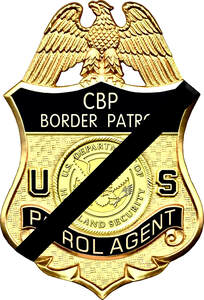 U.S. Border Patrol Badge with a Mourning Band
U.S. Border Patrol Badge with a Mourning Band Titles
- 3 Mounted Watchmen fell before 1924 and are carried as Border Patrol fallen
- 49 Border Patrol Inspectors fell between 1924 and 1970
- 101 Border Patrol Agents have fallen since 1970
- 1 Enforcement Analysis Specialist
The names that appear below hold a place of honor. They have made the ultimate sacrifice in an effort to fulfill the oath each officer took to protect and defend the United States of America.
The facts regarding each officer are presented without major editing of the "language of the day" found in the reports detailing the circumstances of each event. This is done to provide the reader an association with historical timeframes.
Employees who died in the line of duty due to being exposed to deadly illnesses will not have the cause of death listed.
I will note that Border Patrol Agent John Charles Gigax is not recognized as officially fallen by Customs and Border Protection or the U.S. Border Patrol. The Border Patrol Foundation and the Border Patrol Museum also fail to recognize him. He is remembered by all except organizations containing "Border Patrol" in their title. He is remembered by the:
- National Law Enforcement Officer Memorial (see this link),
- Officer Down memorial Page (see this link), and
- Texas Peace Officer's Memorial (see this link).
The U.S. Border Patrol, the Border Patrol Foundation, and the Border Patrol Museum should fix their oversight.
HonorFirst.com remembers and lists Agent Gigax among the fallen.
Agent Gigax is buried in Florida's 5th Congressional District. I have contacted Congressman John Rutherford for assistance in this case. Please contact the Congressman Rutherford if you would like to help.
Christopher Shane Simpkins
Date of Birth: September 23, 1972
Entered on Duty: July 6, 1997
Title: Border Patrol Agent
End of Watch: April 12, 2021
Details:
Border Patrol Agent Christopher Shane Simpkins passed away on April 12, 2021. The circumstances of his passing were reviewed by an executive panel and the CBP Commissioner who agreed that this death occurred in the line of duty. Agent Simpkins will be remembered for his diligent service to the nation and for his bravery in the face of danger.
Agent Simpkins entered on duty on July 6, 1997 at the Falfurrias Station, McAllen Sector, Texas, as part of the 342nd Session of the Border Patrol Academy. At the time of his passing, he was assigned to the Lake Charles Station in the New Orleans Sector.
A native of Selma, Alabama and a graduate of the University of Alabama, Agent Simpkins also honorably served his country in the National Guard as a military police officer. He is survived by his wife, daughter, parents and two brothers.
Gravesite
April 2 - April 8
Intro
Welcome to another This Week in USBP History!
Just like the story of Border Patrol Agent Cary Scott and many others like him, whose acts of heroism eventually received the recognition they deserved, it's vital to understand that acknowledging these agents' sacrifices and achievements is about more than just giving credit where it's due. It's also about fostering pride, loyalty, and motivation among the workforce. Not just within the specialties of the Patrol, but throughout the entire Patrol.
A few years ago, I had the chance to speak with a ranking BORTAC agent. During our conversation, he told me that the agents assigned to the Border Patrol's Special Operations Group (SOG), were silent professionals who didn't want, seek, or need recognition. I acknowledged what he said, but told him that given the nature of their work, that SOG agents should be swimming in seas of colorful ribbons. They should receive their due recognition.
| Before I retired in 2020, I sent the Border Patrol Special Operations Group (SOG) enough USBP Achievement Medal sets to recognize over 90% of their workforce. Unfortunately, by my last count, they had only awarded USBP Achievement Medals to two employees. It's important to note that BORTAC and BORSTAR agents are frequently involved in incredibly dangerous missions that would easily qualify for a USBP Honorary Award, including the Newton-Azrak Award, the USBP Commendation Medal, and the USBP Achievement Medal. Since they are deployed to the action areas, I expect them to be among the highest decorated agents in the Patrol. |
Learning from Military Special Operators:
The importance of recognizing such professionals is not unique to the Border Patrol. Military special operators, like Navy Seals and Army Delta Force, also consider themselves "silent professionals." Despite their inclination to stay out of the spotlight, these operators often receive recognition for their remarkable accomplishments. These acknowledgments serve as reminders of the sacrifices they make and the dedication they demonstrate in fulfilling their duties.
Conclusion:
In conclusion, this blog aims to emphasize the remarkable accomplishments of BORTAC and BORSTAR agents and the significance of acknowledging their efforts. The intention is not to cast a negative light on leadership, but rather to underline that these agents are, first and foremost, Patrol Agents, recognized under the same system as the rest of the workforce through the USBP Honorary Awards Program. While I have not delved into specific instances of heroism and valor, it is important for us to understand that such acts are nearly a daily occurrence within SOG. It is imperative to better recognize the exceptional work of these dedicated agents to ensure that they receive the acknowledgment they so rightfully deserve.
This week starts with a 1904 letter from the Secretary of Commerce and Labor concerning the appointment of Jeff Milton as a Chinese Inspector. There's a 1922 memo concerning the U.S. Customs Service and the Immigration Service. And much more... But most significantly, April 8 commemorates the 47th anniversary of women joining the ranks of Border Patrol Agents. Class 107 began with six women, and ultimately, four would graduate from this class, marking a historic milestone in the agency's history.
We celebrate five Newton-Azrak Award recipients on the anniversaries of their actions.
We remember two of our fallen on the anniversaries of their deaths.
Enjoy and have a fantastic week!
Cliff
PS -
- As an open and continuous invitation to current and former USBP employees, I am always accepting photos to post in the USBP Photo Galleries and in the Upholding Honor First pages. I sure would appreciate you visiting those pages and sending me anything that you think I could post (just send them to [email protected]).
- As always, make sure to explore all of the hyperlinks to the documents and pages.
- Finally, please forward this blog to whomever you think may enjoy it.
ESPRIT DE CORPS
- Organizational pride is the positive feeling experienced by employees from being part of a meaningful team that is rich in history, tradition and culture.
- Employee morale is the feeling experienced by employee based in part on their perception of:
- Being valued by the organization,
- Fairly compensated, and
- Performing meaningful work.
Esprit de corps is reinforced through the shared goals, mission and values of the organization and its employees.
The definition turns Esprit de Corps into a simple formula and defines parts that comprise organizational pride and employee morale.
Esprit de Corps = Organizational Pride + Employee Morale
Esprit de Corps is the key to a healthy organization and engaged employees.
Honor First is foundational to the Border Patrol's organizational pride and integral to its Esprit de Corps.
DOCUMENTS AND EVENTS
- On April 5, 1904, the Secretary of Commerce and Labor wrote a letter to Marcus A. Smith (1851-1924) informing Mr. Smith of the appointment of Jeff Milton (1861-1947) as a Chinese Inspector. The Secretary’s letter was response to a February 23, 1904 letter of recommendation from Mr. Smith.
- Contrary to Border Patrol lore, as per documents that supported Jeff Milton's retirement in 1932, he was neither a Border Patrol Inspector nor a member of the Border Patrol. He was a well-known law enforcement officer in the El Paso District, which encompasses modern day Tucson, El Paso and Big Bend Sectors. It is thought that the leaders of the newly formed Border Patrol used Jeff Milton's rugged independence as an example for new inspectors to follow. This led to lore mistakenly identifying him as the first Border Patrol Inspector.
1922
- On April 5, 1932, the Inspector in Charge of in San Diego, California, Daniel Shepard Kuykendall (1881-1945), wrote a multipage memo addressing the enforcement cooperation between the U.S. Customs Service and the Immigration Service. He also disagreed with a suggestion that the merging of the two organizations could result in efficiencies through the reduction of manpower. The last paragraph in the memo references the “Border Patrol” idea of future Chief and Father of the Border Patrol Frank Berkshire (1870-1934) which would be realized about two years after this letter.
1928
- On April 7, 1928, the Jacksonville District Director wrote a report to the Commissioner-General concerning the district’s manpower, assignments and locations. The district had three sub-districts, Tallahassee, West Palm Beach and Tampa. (Sub-districts would be renamed sectors in the 1940’s). This is the earliest, most complete report know for the area that is now Miami Sector.
1929
- On April 3, 1929, El Paso District Director Grover W. Wilmoth (1884-1951) issued a memo concerning the care, condition and operation of motor vehicles. The El Paso District contained three sub-districts that correspond to modern day Tucson, El Paso and Big Bend Sectors.
1930
- On April 2, 1930, a gunfight occurred between Border Patrol Inspectors and alcohol smugglers in which smuggler Lorenzo Galindo was fatally shot. This collection of documents describes the brief gunfight where a total of five shots were fired. Inspectors involved in the gunfight:
- Senior Patrol Inspector Joseph F. Thomas
- Patrol Inspector Tom P. Isbell (1905-1983), the link includes a photo of him in a USBP uniform.
1935
- On April 4, 1935, the District Director of the Jacksonville wrote a memo concerning the courses of study in two of the district’s three sub-districts. The Jacksonville memo was in response to a memo written December 22, 1934, by Supervisor (Chief) of the Border Patrol Willard Kelly (1903-1969) requesting information concerning the manner in which new Border Patrol Inspectors were trained. Jacksonville stated that they opened courses of study to train Border Patrol Inspectors in the following locations:
- Tampa Sub-district on February 5, 1935
- Miami Sub-district on February 19, 1935
1936
- On April 7, 1936, Supervisor (Chief) of the Border Patrol Willard Kelly wrote a clarification memo concerning positions (ranks) within the Border Patrol. The memo makes the unofficial position of “Assistant Chief Patrol Inspector” an official position. It also makes two classes of Chief Patrol Inspectors, a concept that still exists today with GS-15 and SES Chief Patrol Agents (even though they share the same two-star rank insignia). Further, the memo references the position of “District Supervisor of Border Patrol”. Although not defined in the memo, the position of Assistant Superintendent, originally created in General Order 61, may have been renamed District Supervisor of Border Patrol with this memo.
1953
- On April 2, 1953, Assistant Commissioner (former Chief of the Border Patrol) Willard Kelly wrote a memo the District Director of the San Antonio District concerning, “The need for a fence at Brownsville, Texas to form a barrier against illegal entry or aliens.” This memo was a cover memo for a 7-page report concerning “the need construction of boundary fence and observation towers in vicinity of Brownsville, Texas-Matamoros, Mexico to control illegal traffic.” The document is a “condensed report taken from a 29-page report submitted by Patrol Inspector in Charge Snow.” The first two paragraphs which were written 70 years ago, seem just as applicable today.
- The illegal traffic across the practically dry Rio Grande River bed within the area encompassed by the city limits of Brownsville, Texas and the neighboring city of Matamoros, Tamps., Mexico has reached such proportions that the construction of a boundary fence seems to be not only necessary and justified but also almost imperative. I know of no other way to cope with the situation. It is already completely beyond the ability of the presently authorized strength of the Brownsville Border Patrol unit to control, and grows worse steadily.
- The seriousness of this situation lies not only in the fact that such large numbers of aliens are violating our Immigration laws to the point or making a farce or them, but that this disgraceful situation has become a public spectacle with thousands of out of state visitors from all over the nation witnessing and photographing these brazen mass violations of our laws in open daylight.
1955
- In recognition of the importance of intelligence and the need for trained officers functioning in a systematic, uniform manner, the first Border Patrol Intelligence Training School was convened in El Paso, Texas, on April 7, 1955. Seasoned officers who had demonstrated an aptitude for this type of activity were selected and attended a course which included organizational structure, aims, responsibilities and techniques.
- From - HONOR FIRST: The Story of the United States Border Patrol - Volume II by Joseph Banco
1975
- The new era for the U.S. Border Patrol began on April 8, 1975, when for the first time in its fifty-one-year history, six women were among the trainees who would undergo training to become Border Patrol Agents as part of U.S. Border Patrol Academy Session 107 held April 8 to July 31, 1975 at Los Fresnos, Texas. At the time, Session 107 was the largest Academy class ever held, with 223 trainees.
- From - HONOR FIRST: The Story of the United States Border Patrol - Volume Three 1975-1999 by Joseph Banco
- On April 8, 1975, six trailblazing women began their training at the U.S. Border Patrol Academy, Session 107 in Los Fresnos, Texas. On July 31, 1972, the following four made history by successfully completing their training and becoming Border Patrol Agents:
- Christine G. Davis (Gee) - Chula Vista Sector
- Gail Durand - Yuma Sector
- Doris H. Griffin - Yuma Sector
- Leslie A. Mullins - Yuma Sector
- See this document.
NEWTON-AZRAK AWARD
ACTION ANNIVERSARIES
- An organization’s values are codified in its awards system. Recognizing the achievements, service and heroism of employees is important. It is critical for those in positions of leadership to value the workforce. Awards are a fundamental manner for leaders to demonstrate appreciation to the workforce for upholding the organizational values. – U.S. Border Patrol Honorary Awards
John K. Crowther
Border Patrol Agent
Del Rio Sector
Border Patrol Agent John K. Crowther was recognized for his courage in attempting to rescue two men from the Rio Grande River. On the night of April 6, 1993, Agent Crowther was performing river patrol when he spotted three individuals attempting to illegally enter the U.S. at a weir dam located upriver from the Del Rio, Texas International Bridge. Two of the subjects tried to get away by diving into the water near the dam. This part of the river, filled with strong currents and dangerous undertows, had caused numerous drowning deaths. Knowing the danger involved and putting his own life at risk, Agent Crowther entered the water and attempted to rescue the two men. He managed to grab one of the men and pull him to safety. Agent Crowther tried to rescue the other man but could not locate him. Agent Crowther put his own life at risk to save another person from certain death, exhibiting great courage with his act of heroism.
1994
Jorge Arballo
Border Patrol Agent
El Centro Sector
Forrest J. Mauldin
Border Patrol Agent
El Centro Sector
At approximately 12:15 a.m. on April 8, 1994, Agents Marshall Tjaden and Forrest J. Mauldin observed a group of nine suspected narcotics smugglers approximately one mile west of Drop 4 on the All American Canal. The nine suspects were ferrying large bundles of contraband, in this case marijuana, across the canal in a rubber raft. Agents Tjaden and Mauldin advised SBPA Donn Hoberg of the situation, who then instructed Agents Arballo and Lee to respond and assist Agents Mauldin and Tjaden.
At the point on the canal where this activity was taking place, the canal is approximately one hundred yards wide, deep, and had an extremely swift moving current. It should also be pointed out that on this particular night, the weather conditions were poor. The wind was strong, gusting up to 30 miles per hour and the temperature was in the forties.
Agents Tjaden and Mauldin maintained surveillance on the group until all nine suspects, with large bundles of contraband and the rubber raft were all out of the canal and on the north side of the north berm of the canal. Agents Tjaden and Mauldin began to sneak up on the group and got into position less than eight feet from them. They made their move and apprehended two of the nine suspects and 366.5 pounds of marijuana.
While Agents Tjaden and Mauldin were securing the apprehension scene and checking the immediate area for the seven suspects who had fled, they heard screams coming from the direction of the canal. Agent Tjaden climbed to the 40-foot berm and saw an individual in the berm. The person was screaming for help and appeared to be drowning. Agent Tjaden called for Agent Mauldin to assist him. Agent Mauldin climbed to the top of the berm while Agent Tjaden ran down to the canal bank.
At this point, Agents Arballo, Lee, and SBPA Hoberg arrived on the scene. Agent Mauldin guided Agent Arballo to his location on the north side of the canal. He then directed Agent Lee and SBPA Hoberg to the south side of the canal as the drowning man appeared closer to that side. Agent Tjaden was telling the man in the water not to fight the current, but to swim with it.
Agents Arballo and Mauldin were preparing to make another rescue attempt. This time, the drowning man was able to grab onto a small outcropping of brush, which slowed him down considerably.
Without hesitation, Agent Arballo again jumped into the icy water while Agent Mauldin anchored the tow strap. This time, Agent Arballo was successful in reaching the man. He grabbed the man and yelled for Agent Mauldin to start pulling. Agent Mauldin pulled as hard as he could, and after several minutes, managed to pull Agent Arballo and the drowning victim to safety.
Because of the extremely cold water, the distance they had traveled, which was over one mile, and because this entire ordeal had lasted approximately 30 minutes, Agents Arballo and Mauldin were physically exhausted.
Agents Arballo and Mauldin acted on instinct more than anything else. They disregarded the fact that a large load of narcotics had just been apprehended and the fact that the drowning man was probably one of the drug smugglers. They saw a person in desperate need of help, rushed to his aid, and saved his life.
What Agents Arballo and Mauldin did was extremely dangerous. However, they acted without hesitation. They thought about what there were going to do, planned their moves, and executed them to the best of their ability.
2001
Benjamin Sanford
Senior Patrol Agent
El Centro Sector
On April 2, 2001, Senior Patrol Agent Benjamin Sanford was patrolling a stretch of the All American Canal, near Calexico, California, monitoring the border fence for people attempting to enter the country illegally from Mexico. A concerned citizen frantically approached him to report that a car had just plummeted into the canal. Agent Sanford immediately called his colleagues at the Calexico Station for assistance, and then drove to the crash site. When he arrived at the scene, he saw a partially submerged car and a woman flailing in a fight against the swift currents. Realizing he could not wait for help to arrive, and giving little regard to his own well-being, he dove into the water, swam to the woman, and dragged her to shore. His heroic actions saved her from certain death.
2022
Marco A. Perez Jr. - photo, award certificate
Border Patrol Agent
San Diego, CA
On April 6, 2021, at approximately 6:58 A.M., beyond the call of duty, Border Patrol Agent Marco Perez put his own life at great personal risk and acted without hesitation to save a woman from certain death as she attempted to end her life. By leaning over the edge of the 459 foot Pine Valley Bridge and grabbing the suicidal victim that had just let go, Agent Perez placed himself in great personal danger. Agent Perez's conspicuous lifesaving actions brought great credit upon himself and the U.S. Border Patrol.
U.S. BORDER PATROL FALLEN
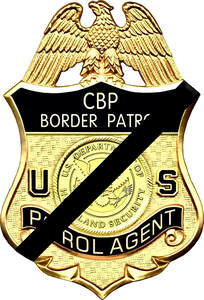 U.S. Border Patrol Badge with a Mourning Band
U.S. Border Patrol Badge with a Mourning Band Titles
- 3 Mounted Watchmen fell before 1924 and are carried as Border Patrol fallen
- 49 Border Patrol Inspectors fell between 1924 and 1970
- 101 Border Patrol Agents have fallen since 1970
- 1 Enforcement Analysis Specialist
The names that appear below hold a place of honor. They have made the ultimate sacrifice in an effort to fulfill the oath each officer took to protect and defend the United States of America.
The facts regarding each officer are presented without major editing of the "language of the day" found in the reports detailing the circumstances of each event. This is done to provide the reader an association with historical timeframes.
Employees who died in the line of duty due to being exposed to deadly illnesses will not have the cause of death listed.
I will note that Border Patrol Agent John Charles Gigax is not recognized as officially fallen by Customs and Border Protection or the U.S. Border Patrol. The Border Patrol Foundation and the Border Patrol Museum also fail to recognize him. He is remembered by all except organizations containing "Border Patrol" in their title. He is remembered by the:
- National Law Enforcement Officer Memorial (see this link),
- Officer Down memorial Page (see this link), and
- Texas Peace Officer's Memorial (see this link).
The U.S. Border Patrol, the Border Patrol Foundation, and the Border Patrol Museum should fix their oversight.
HonorFirst.com remembers and lists Agent Gigax among the fallen.
Joseph P. Riley
Date of Birth: October 23, 1894
Entered on Duty: October 8, 1924
Title: Patrol Inspector
End of Watch: April 6, 1925
Details:
During the evening of April 4, 1925, Patrol Inspectors William A. Blundell and Joseph P. Riley were patrolling in a government-owned car about 1 1/2 miles from Eureka, Montana, when the tie rod broke, causing the automobile to leave the roadway. The vehicle continued over a high bank and then into a ditch and turned over, pinning Inspector Riley under the steering wheel. Patrol Inspector Blundell was not seriously injured.
Patrol Inspector Riley sustained a fractured cervical vertebra and a spinal cord injury. He was conveyed to the Eureka Hospital, which was nearest the scene of the accident. The attending physician advised that Inspector Riley's condition was so serious that facilities were not available for providing proper attention at Eureka and he recommended moving the patient to Spokane, Washington. On April 5, Inspector Riley was transported by train to Spokane, Washington, where he was placed in the Sacred Heart Hospital. He succumbed at 6:00 a.m. on April 6, 1925, from respiratory paralysis.
Survivor benefits - As per this document, his mother received $20 per month for 8 years
Gravesite
2001
Jason C. Panides
Date of Birth: December 27, 1974
Entered on Duty: March 9, 1998
Title: Border Patrol Agent
End of Watch: April 4, 2001
Details:
On Wednesday, April 4, 2001, at 12:36 a.m., Border Patrol Agent Jason C. Panides was killed after assisting in the apprehension of a group of illegal aliens on Interstate Highway 35, north of Laredo, Texas. Agent Panides was in the southbound lane of the east access road when he was struck by a southbound truck. He was killed instantly.
Agent Panides was a native of Jacksonville, Florida, and was a graduate of the University of Florida with a degree in criminal justice and psychology. He was a graduate of the 368th session of the Border Patrol Academy at Glynco, Georgia. At the time of his death, he was stationed at the Laredo North Border Patrol Station.
Gravesite
Clifford Gill
Blog author, retired U.S. Border Patrol Assistant Chief and, current U.S. Border Patrol employee advocate.
Read more about Cliff here.
Ray Harris
Site founder and owner, former Supervisory Border Patrol Agent and retired Immigration Special Agent.
Read more about Ray here.
Joseph Banco
U.S. Border Patrol historian and retired Deputy Chief Patrol Agent.
Read more about Joe here.
Archives
July 2024
June 2024
May 2024
April 2024
March 2024
February 2024
January 2024
December 2023
November 2023
October 2023
September 2023
August 2023
July 2023
June 2023
May 2023
April 2023
March 2023
February 2023
January 2023
December 2022
November 2022
October 2022
September 2022
August 2022
July 2022
June 2022
May 2022
April 2022
March 2022
February 2022
January 2022
December 2021
November 2021
October 2021
September 2021
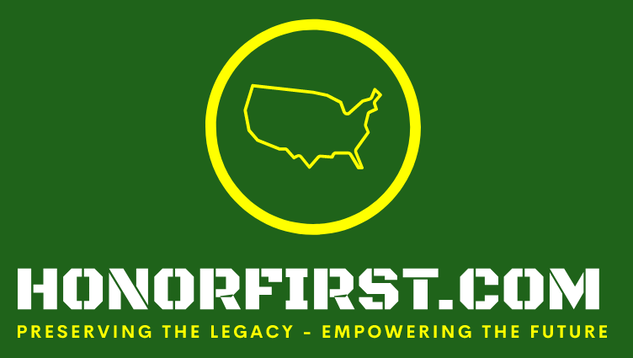

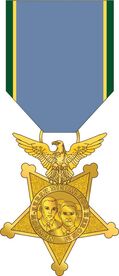
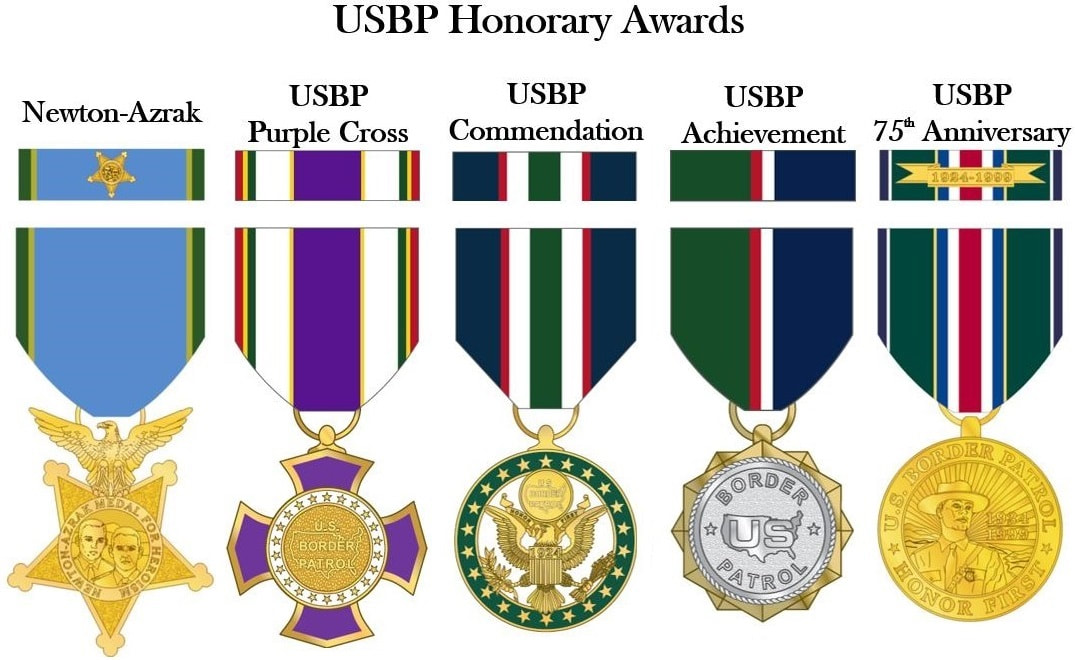
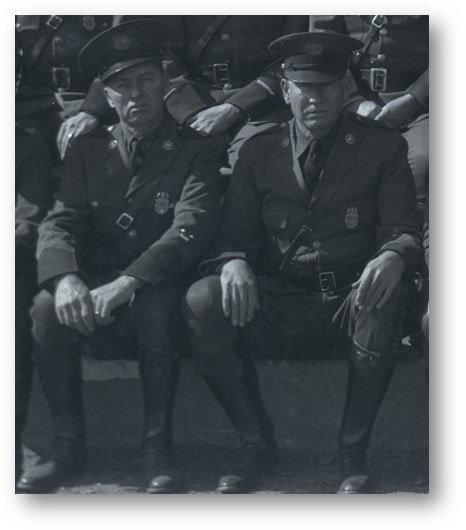
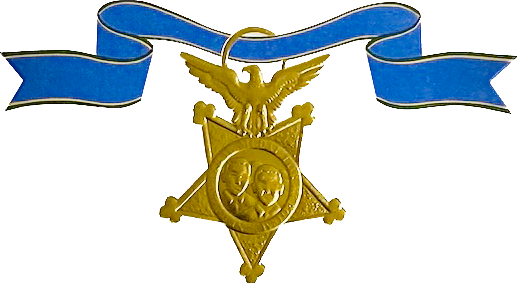
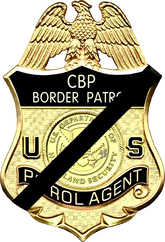
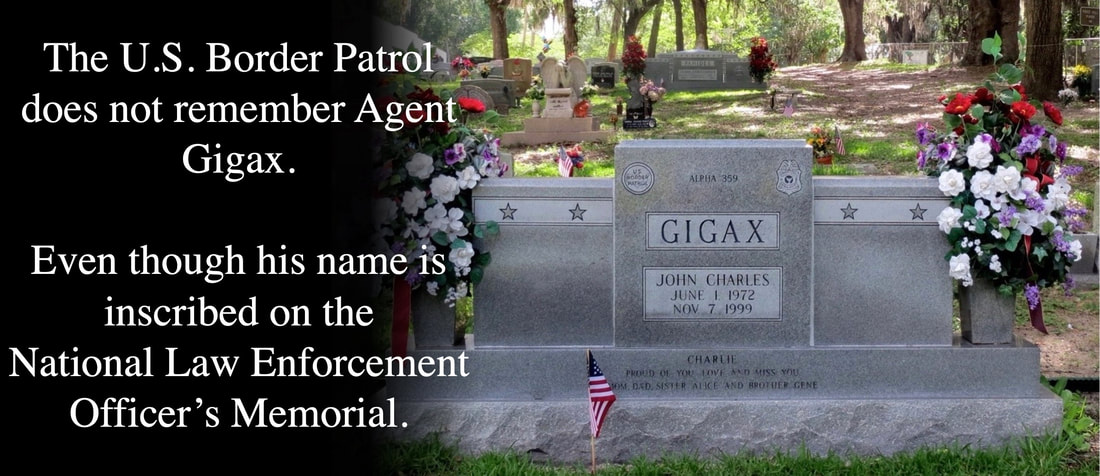
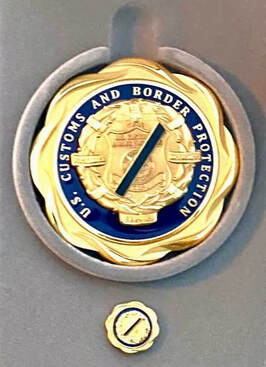
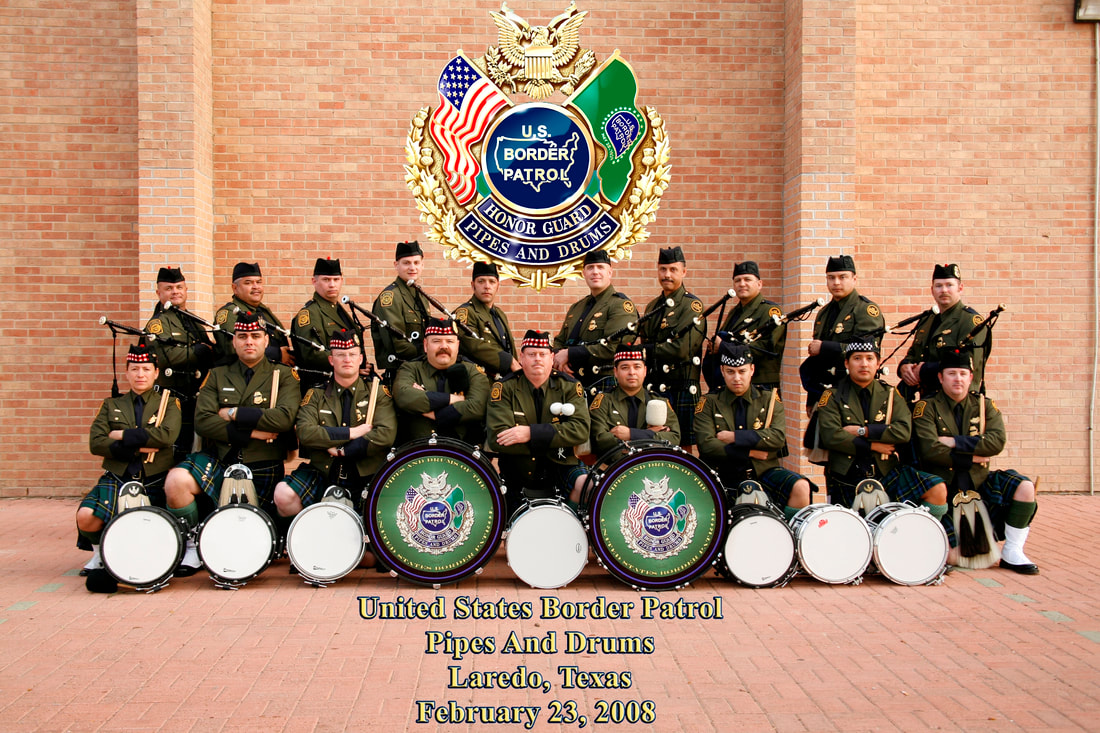
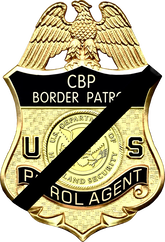
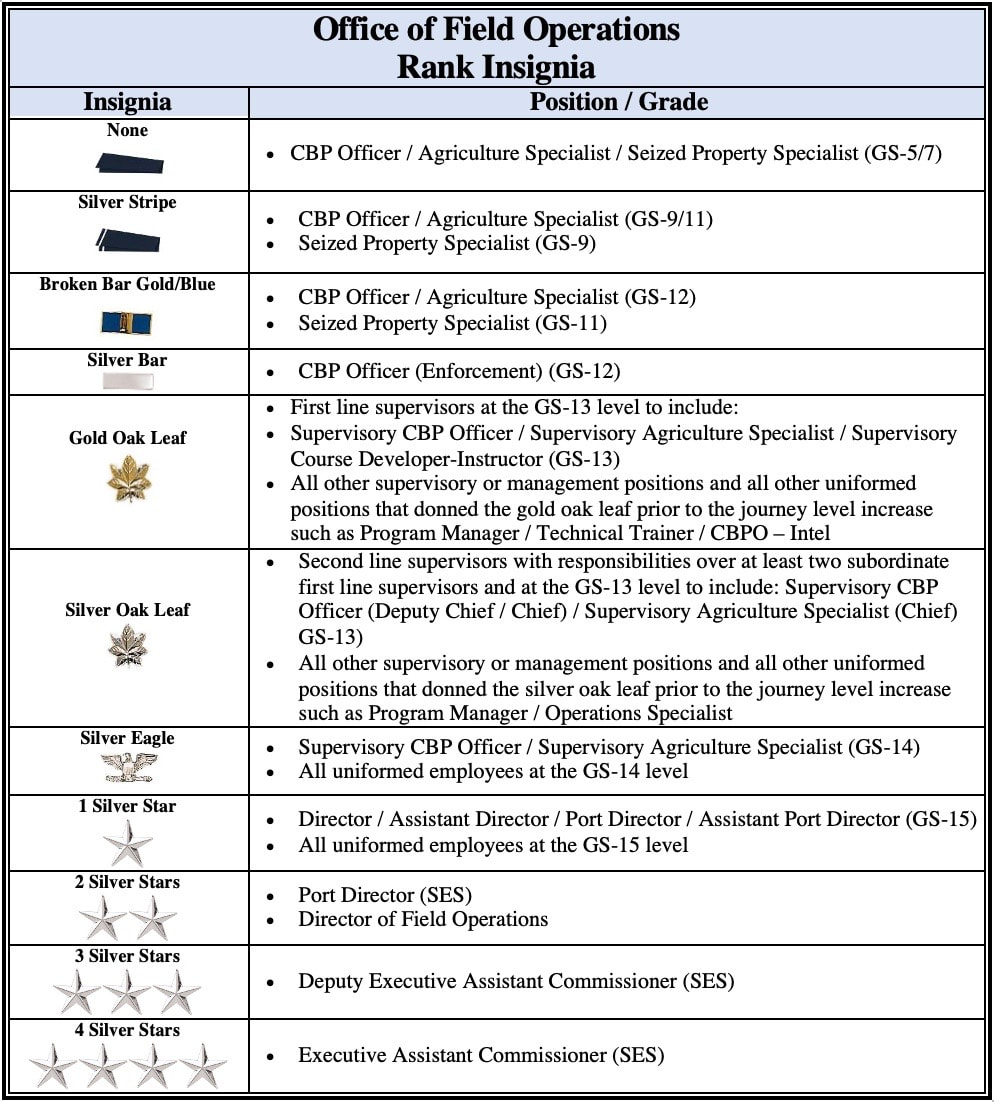
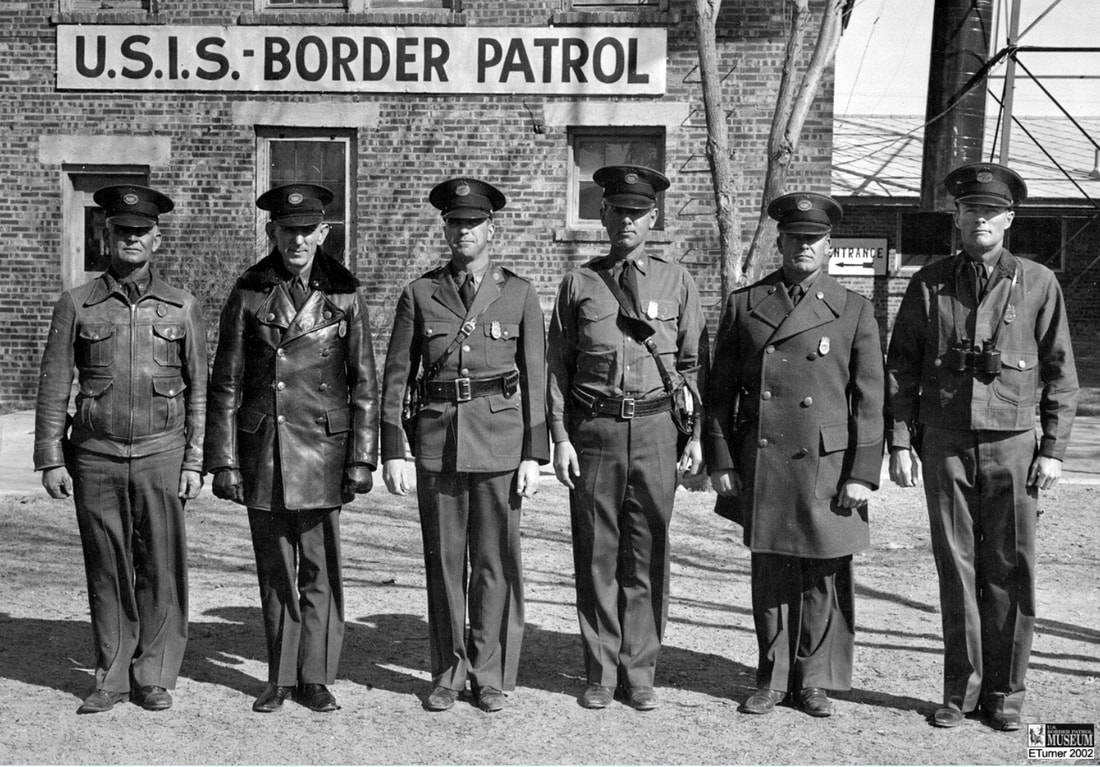
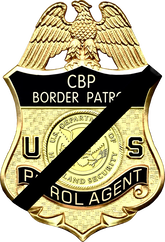
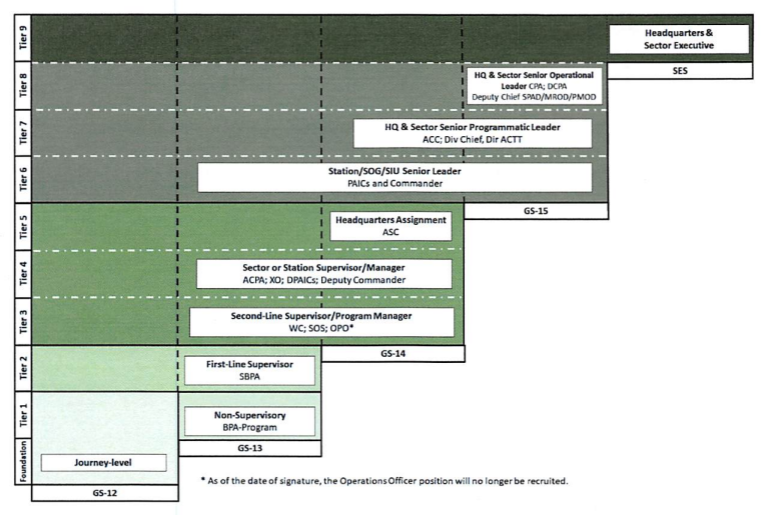
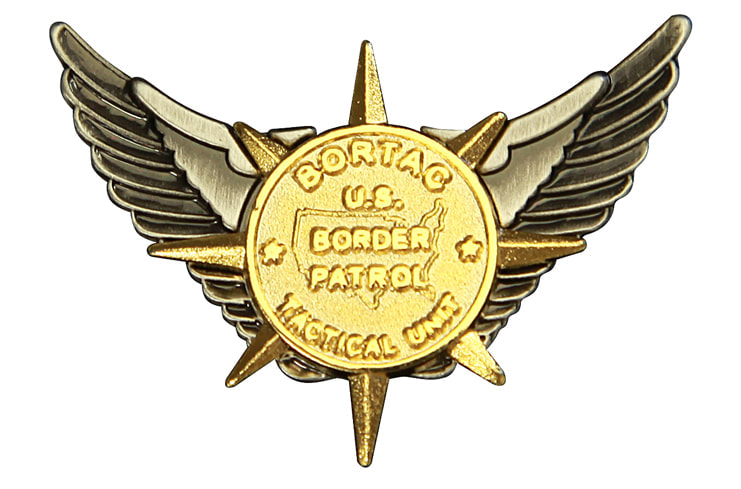
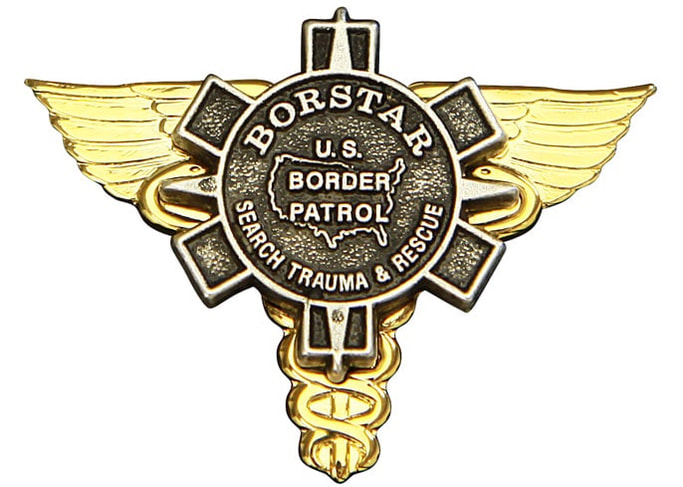
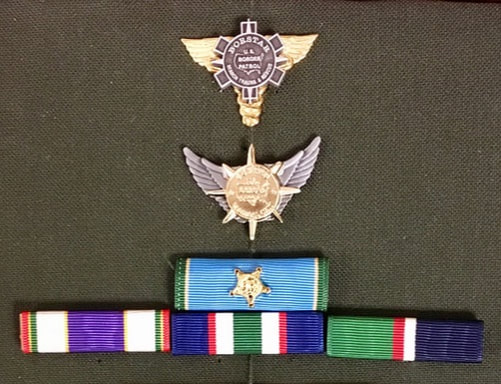
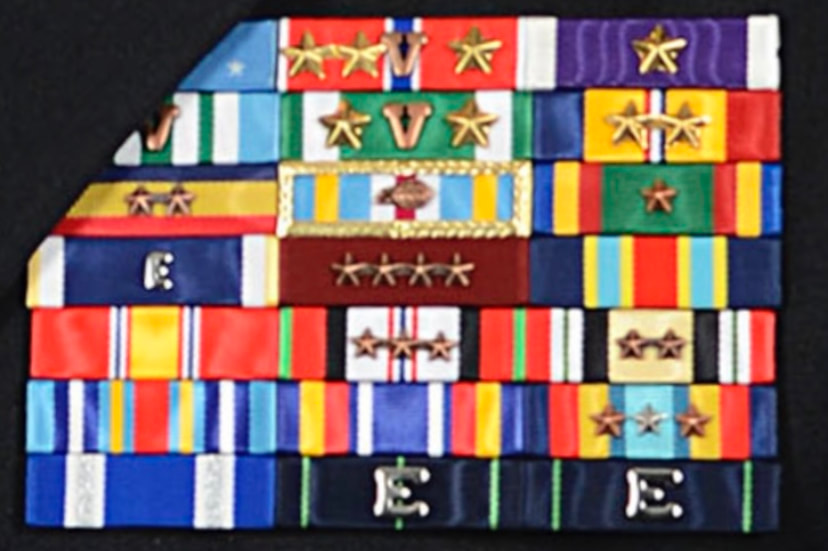
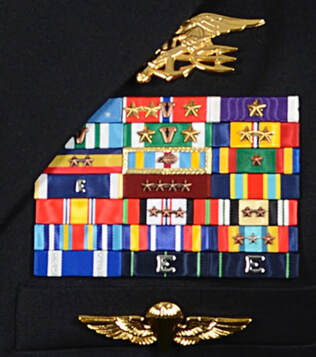
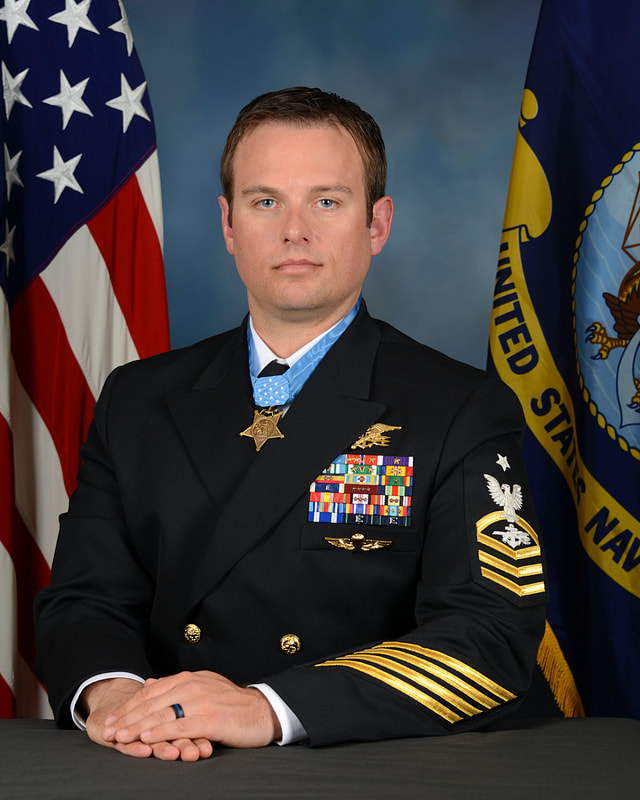

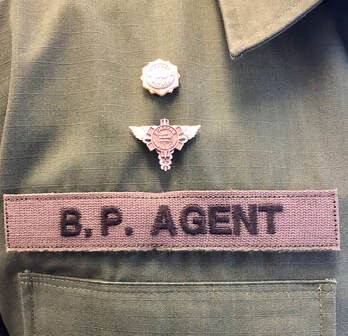
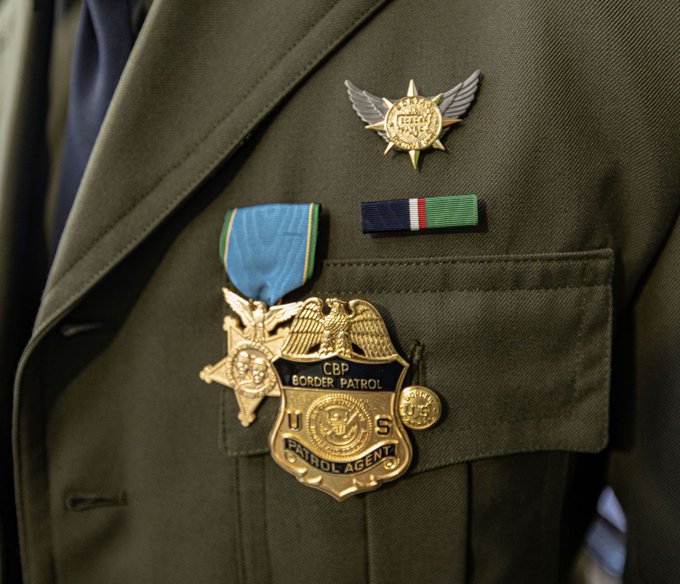
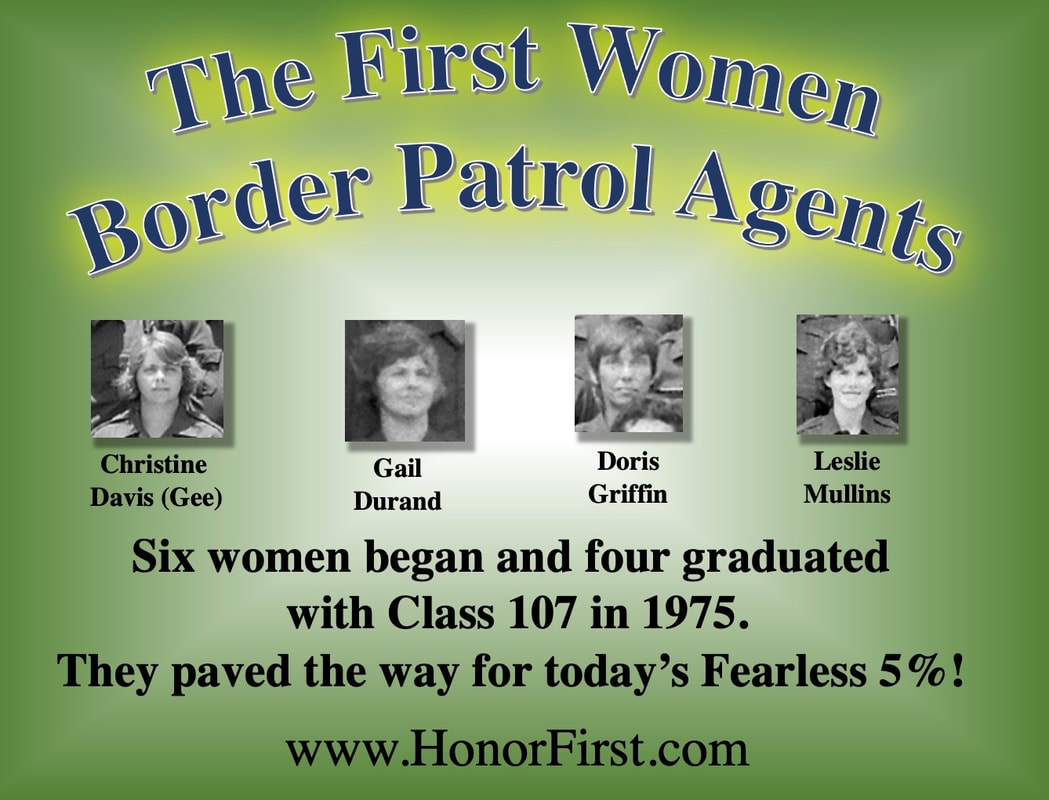
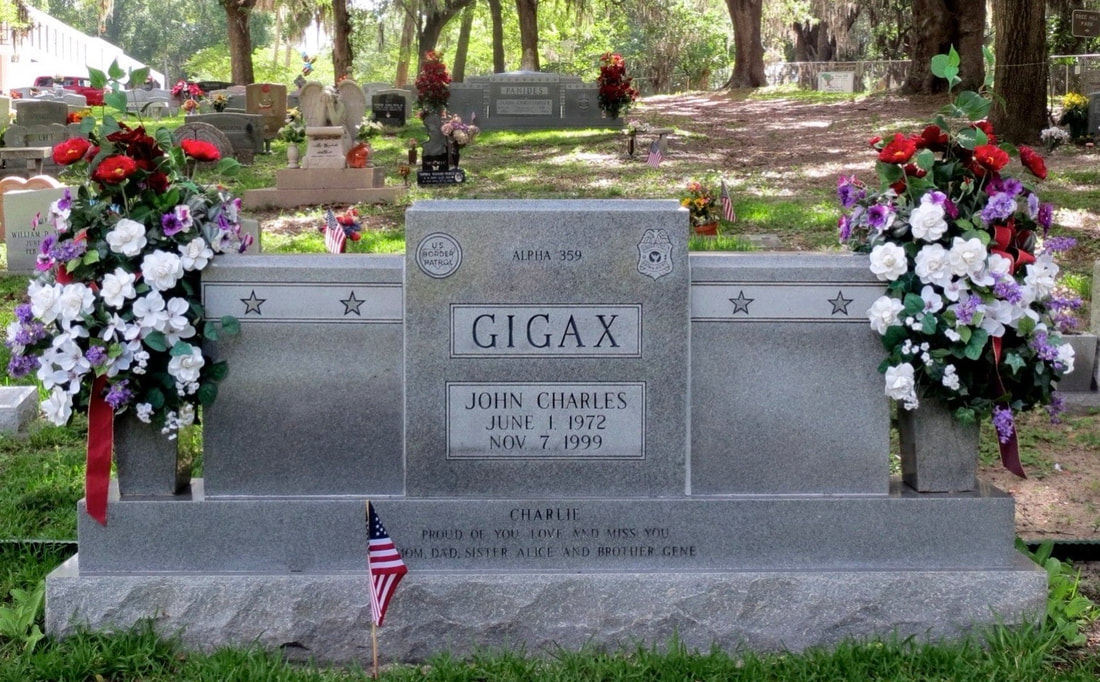
 RSS Feed
RSS Feed
